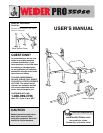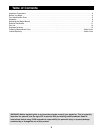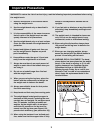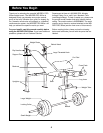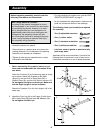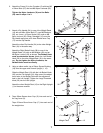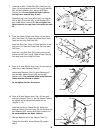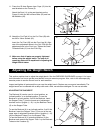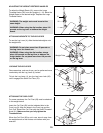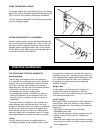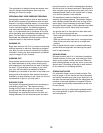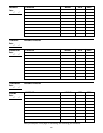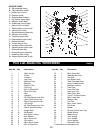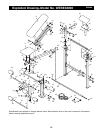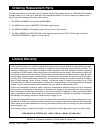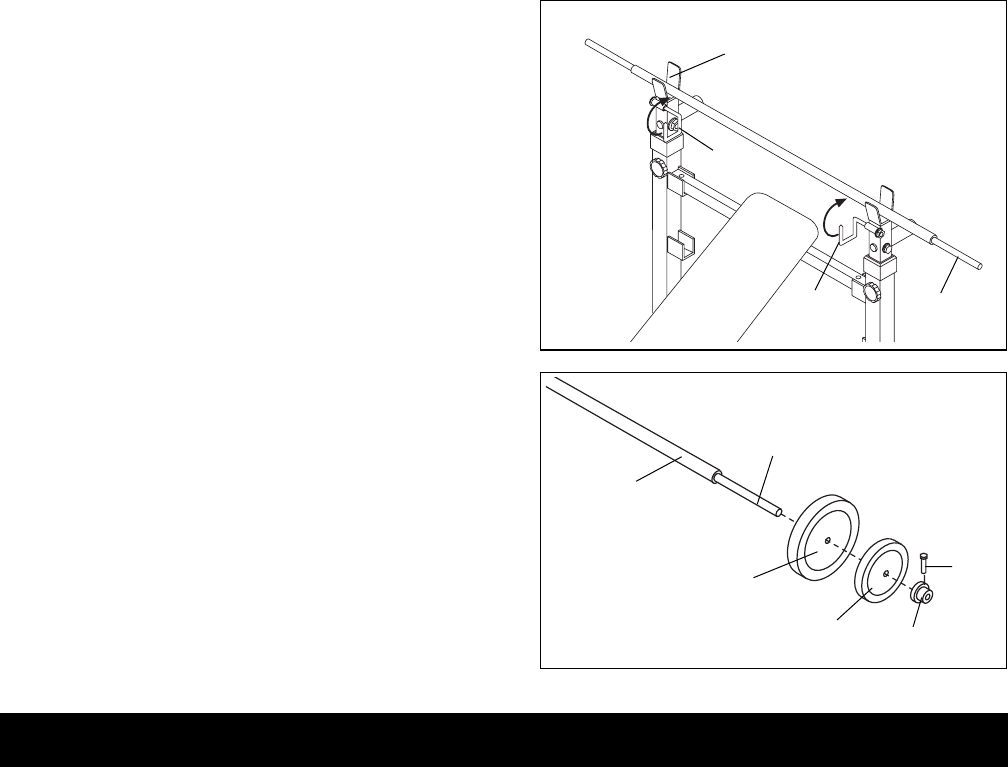
11
THE FOUR BASIC TYPES OF WORKOUTS
Muscle Building
The only way to increase the size and strength of
your muscles is to push them close to their maximum
capacity. When you progressively increase the inten-
sity of your exercise, your muscles will continually
adapt and grow. You can tailor the individual exercise
to the proper intensity level in two ways:
¥ by changing the amount of weight used
¥ by changing the number of repetitions or sets per-
formed (A ÒrepetitionÓ is one complete cycle of an
exercise, such as one sit-up. A ÒsetÓ is a series of
repetitions).
The proper amount of weight for each exercise obvi-
ously depends upon the individual user. You must
gauge your limits and select the amount of weight that
is right for you. Begin with 3 sets of 8 repetitions for
each exercise you perform. Rest for 3 minutes after
each set. When you can complete 3 sets of 12 repeti-
tions without difficulty, increase the amount of weight.
Toning
You can tone your muscles by pushing them to a
moderate percentage of their capacity. Select a mod-
erate amount of weight and increase the number of
repetitions in each set. Complete as many sets of 15
to 20 repetitions as possible without discomfort. Rest
for 1 minute after each set. Work your muscles by
completing more sets rather than by using high
amounts of weight.
Weight Loss
To lose weight, use a low amount of weight and
increase the number of repetitions in each set.
Exercise for 20 to 30 minutes, resting for a maximum
of 30 seconds between sets.
Cross Training
Many people desire a complete and well-balanced fit-
ness program, and cross training is a very efficient
way to accomplish this. One example of a balanced
program is:
¥ Plan weight training workouts on Monday,
Wednesday and Friday.
¥ Plan 20 to 30 minutes of aerobic exercise, such as
cycling, running or swimming on Tuesday and
Thursday.
¥ Rest from both weight training and aerobic exercise
for at least one full day each week to give your body
time to regenerate.
Exercise Guidelines
USING THE BARBELL HOOKS
To change weights while the Barbell (44) is on the Weight
Rests (19), secure the Barbell with the Barbell Hooks (28,
30). To do this, flip the Barbell Hooks over the Barbell.
This will reduce the possibility of the Barbell tipping while
you are changing weights.
ATTACHING WEIGHTS TO THE BARBELL
Slide the same number of Large and Small Weights (48,
49) onto each end of the Barbell (44). Slide a Collar (47)
onto each end of the Barbell. Slide the Collars and the
Weights against the Barbell Sleeve (46). Firmly tighten
the Set Screws (43). Make sure that the Weights cannot
move back and forth on the Barbell.
28
19
44
30
44
46
48
43
47
49



